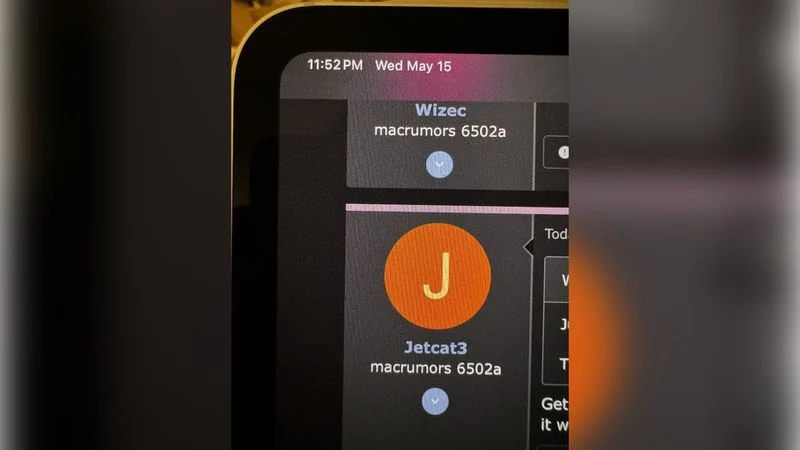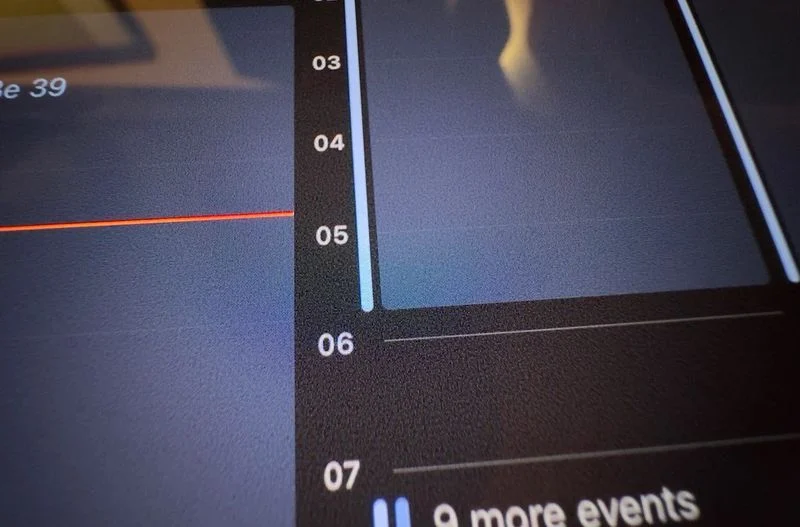Highlights
- M4 iPad Pro users report static grain pattern on screens
- Grain most visible in low to medium brightness and dim lighting
- Possible manufacturing defect or inherent OLED feature
- Issue primarily affects 11-inch models from Samsung
There have been reports of an obvious static grain pattern displaying on the screens of the just-released M4 iPad Pros by Apple with OLED displays.
Several owners have taken to Reddit and the MacRumors Forums to share their experiences with the issue.
When the brightness of the display is low or medium, the grain is most visible in areas with dim lighting, especially when viewing content with muted or grayscale colors.
Some users have likened the appearance to the visual noise in high ISO images.
Flaw in the OLED Display or a Defect?

It’s difficult at this point to determine whether the grain pattern observed is an actual flaw in the display or an inherent feature of OLED technology.
Manufacturing and design-related issues may bring about a “screen-door effect” or visual grain in the OLED displays.
Irregularities in the size and form of individual sub-pixels, along with those in the organic component deposition, can result in uneven texture or graininess.
In addition, slight variations in screen brightness, based on power management strategies, may appear as a grainy effect at low light or display of uniform colors on the OLED display, which controls brightness at the pixel level.
Supplier Differences and Potential Defects

Interestingly, reports of spongy displays on Samsung’s Galaxy S24 Ultra smartphones were similar in number.
While the displays for the 13-inch iPad Pro model come from LG Display, the displays for the 11-inch M4 iPad Pro model come from Samsung.
A Korea-based report indicates that as a result of Samsung’s poor 11-inch panel yields, Apple was forced to shift some of its orders for the smaller panel to LG Display.
While there are some 13-inch model reports also, the vast majority of the reports of the grain pattern seem to be tied to the 11-inch iPad Pro model.
The reports seem to be limited to new iPad Pro models using the Standard glass option.
Apple also offers the matte nano-texture display option for the 1TB and 2TB storage options for a $100 premium.
As more users get their M4 iPad Pro units, it will be clear if the grain pattern described is a widespread issue or an isolated incident.
If the fault is legitimate, Apple might have to address the issue with software updates or hardware revision.
FAQs
What is the static grain pattern issue on the M4 iPad Pro?
Users have reported seeing a static grain pattern on the screens of their new M4 iPad Pros, especially in low to medium brightness settings and in dim lighting conditions.
Which models are affected by the grain pattern issue?
The issue primarily affects the 11-inch M4 iPad Pro models, which use OLED displays from Samsung, though some reports also mention the 13-inch models.
Is the grain pattern a defect or a feature of OLED displays?
It’s currently unclear whether the grain pattern is a defect or an inherent feature of OLED technology. It could be related to manufacturing issues or the natural characteristics of OLED screens.
Are there any differences in display quality based on the supplier?
Yes, the 11-inch M4 iPad Pro models use Samsung displays, while the 13-inch models use LG Display. The grain pattern issue has been more frequently reported in the 11-inch models.
